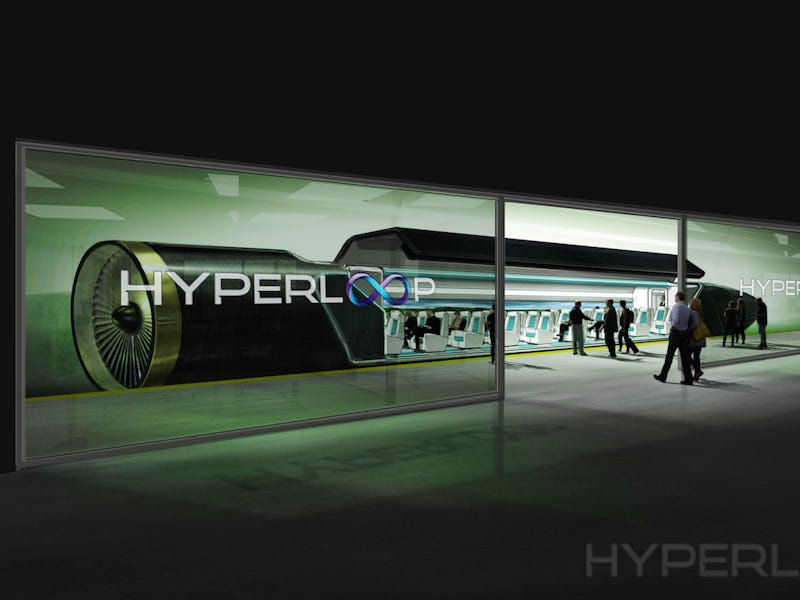The Hyperloop Race Heats Up
Two companies quietly snuck two progress-report videos onto YouTube last week. Who's leading the race?

Both of the leading and competing hyperloop companies are making significant progress on their construction of what’s become known as Elon Musk’s literal pipe dream. Hyperloop Transportation Technologies announced that it’ll begin construction in the “second quarter” of 2016, and the similarly named competitor Hyperloop Technologies, Inc. is already at work in North Las Vegas.
If and when one of the two succeeds, you’ll be hopping into a pod “like you do a roller coaster” that’ll whip you — or, hopefully, gently ease you — from zero to 760 mph and from San Francisco to Los Angeles in about 35 minutes. (Forget zero-to-60 mph rates, zero-to-350 mph in two seconds is projected.) And hyperloops, compared to high-speed rail and other large-scale transportation systems, are relatively inexpensive to build.
In the words of HTT’s CEO, Dirk Ahlborn:
“Imagine living 100 miles away in a great city that’s newly built with a front yard, and within 10 minutes you’re in San Francisco. That’s the solution we are building.”
As mentioned, HTT and HTI are both building test tracks. HTT’s will be in Quay Valley, California, and HTI’s is currently going up in the Nevada desert. Quay Valley is a proposed futuristic, solar-powered city that could one day be home to 75,000 people. HTT claims that the test track will be completed sometime next year and by 2019 it’ll be buzzing passengers around the (proposed) city of the future.
Since they’re young companies, both are hoping to entice capable volunteers — and funders — to make their hyperloops a reality. HTI is sponsoring SpaceX’s upcoming hyperloop pod design contest.
HTT wants people to sign on to volunteer a minimum of 10 hours a week and CEO Dirk Ahlborn claims that the company is already getting big-shot funding offers. TechCrunch reports that HTT has volunteers from NASA, Boeing, Tesla, and SpaceX. In Ahlborn’s own words: “$150 million… is literally nothing.”
“It’s not the amount of money — it’s not if you spend 16, 40, or 50 billion dollars — it’s how fast do I get it back, and is it continuously costing me something. And right now, that’s exactly the problem. That’s why transit and transportation sucks. I mean, traveling sucks, right? Who really likes traveling? It used to be that it’s an experience, but it’s not anymore. So we are committed to make it suck less, basically. That’s our goal. We are not thinking to do this alone. We need you guys: we need really bright minds that are working on huge problems to help us.”
HTI seems a bit more practically-minded, though, even down to their website design. There are already prototypes, pods, test tracks, engines, and more. It just announced the completion of a wind tunnel, “the only one like it in the world,” that’s providing “really, really valuable data.”
And, plus, they have the concept art that we all want:
The company is also hoping to put hyperloops as much as 80 meters (262 feet) underwater, which would possibly skirt some of the potential land-usage right speed bumps. (In the words of HTI’s VP of Design and Analysis, “something really special” happens at that depth, “which is absolutely nothing.”) An artist’s depiction:
Eventually we could see various, connected hyperloop tubers connect cities across the United States, much in the same way subway lines connect various parts of New York City. HTT offers this vision:
We’ll keep you in the ‘loop about each company’s continued progress.